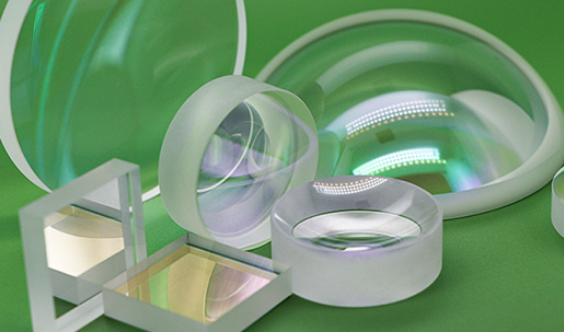What are Coated Achromatic Lenses?
Oct. 01, 2023
Achromatic lenses are a critical component in the world of optics, designed to correct chromatic aberration, a common optical issue. To enhance their functionality, these lenses are often coated with various materials to improve performance. In this article, we will explore the concept of coated achromatic lenses, their purpose, and the benefits they bring to optical systems.
Understanding Achromatic Lenses
To comprehend the significance of coated achromatic lenses, it's essential to first understand the purpose and functionality of achromatic lenses.
Achromatic Correction
Chromatic aberration is an optical phenomenon that occurs when different colors of light are focused at different points. It leads to blurriness and color fringing in images, reducing the overall optical quality of a lens. Achromatic lenses are designed to minimize this issue by combining two different lens elements, usually a positive lens made from a low dispersion crown glass and a negative lens made from a high dispersion flint glass.
The combination of these elements results in the cancellation of chromatic aberration, producing sharper, more color-accurate images. However, to optimize their performance, achromatic lenses can be further enhanced with coatings.
Coating Achromatic Lenses
The process of coating achromatic lenses involves applying thin layers of specialized materials to the lens surfaces. These coatings are known as anti-reflective (AR) coatings, and they serve several critical functions:
1. Reducing Reflection
AR coatings reduce the amount of light that is reflected from the surface of the lens. This is important because uncoated lenses can lose a significant portion of incident light due to reflection. By reducing reflection, more light can pass through the lens, resulting in brighter and more efficient optical systems.
2. Enhancing Light Transmission
In addition to reducing reflection, AR coatings enhance the overall light transmission of the lens. By allowing more light to pass through, the coated lens can capture a greater amount of information, leading to higher-quality images and improved optical performance.
3. Minimizing Ghosting and Flare
AR coatings are also effective in reducing unwanted optical phenomena such as ghosting and flare. These issues can occur when light reflects off the lens surfaces and scatters within the lens system. Coatings help to minimize this effect, resulting in cleaner and crisper images.
4. Improving Contrast
By reducing the scattering of light within the lens system, AR coatings can enhance image contrast. This is especially crucial in applications where high contrast is essential, such as in microscopy or photography.
Custom MgF2 Coated Achromatic Lenses
Benefits of Coated Achromatic Lenses
The application of AR coatings to achromatic lenses offers several key benefits that significantly enhance their optical performance:
1. Improved Image Quality
Coated achromatic lenses produce images with greater sharpness and clarity. The reduction in reflection and enhanced light transmission result in images that are free from unwanted artifacts and color fringing.
2. Enhanced Low-Light Performance
AR coatings are particularly valuable in low-light conditions. By allowing more light to pass through the lens, coated achromatic lenses can capture more detail and produce brighter images, making them suitable for applications like astronomy and night photography.
3. Reduced Lens Flare
Lens flare can be a common issue when working with bright light sources. Coated achromatic lenses are better at minimizing lens flare, ensuring that your images remain free from distracting artifacts caused by scattered light.
4. Extended Lifespan
Coatings can protect the lens surface from environmental factors like dust, moisture, and scratches. This protection helps extend the lifespan of the lens, ensuring long-term optical performance.
5. Versatility
Coated achromatic lenses find applications in a wide range of optical systems, including cameras, microscopes, telescopes, and medical instruments. Their versatility and improved optical performance make them a valuable asset in various industries.
Choosing Coated Achromatic Lenses
When selecting coated achromatic lenses for a specific application, consider factors such as the type of coating, the wavelength range, and the intended use. Different coatings are designed for specific wavelengths, so it's essential to choose one that aligns with your application's requirements.
Additionally, the quality of the coating should be a key consideration. High-quality coatings offer better durability and performance, making them a worthy investment for applications where optical precision is paramount.
Conclusion
Coated achromatic lenses represent an advanced approach to optical correction. By applying anti-reflective coatings to these lenses, you can significantly enhance their optical performance. This results in images that are free from chromatic aberration, have improved contrast, and exhibit reduced lens flare and ghosting.
The use of coated achromatic lenses is prevalent in various industries where optical precision is crucial. Whether you are a photographer, a scientist, or a medical professional, the enhanced image quality and reliability that these lenses offer make them a valuable asset in your optical toolkit.




















